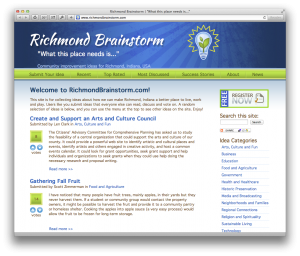An article in today's Palladium-Item quotes the U.S. Census Bureau statistic that "7.9 percent of Wayne County residents have a four-year college degree. The state average is 14.6 percent."
I haven't been able to find the data that supports those statements. According to the Census Bureau's 2012 American Community Survey 1-year Estimates, the numbers are a little better than that: 16.8% of the Wayne County population over 18 have a bachelor's degree or higher. Other collections and analysis of data also suggest better numbers, e.g. 13.7% of people 25 or older have a bachelor's degree or higher or 17.1% of people 25 or older have a B.A. or higher degree.
I wholeheartedly agree with the article's point that the community needs to address 'brain drain' and improve our education situation. But I was troubled to read that the number of residents with a four-year college degree or better are that low, and at least with some initial research, it appears they may not be.
I'll reach out to the Palladium-Item to see if I can get more information about the source of the stats.
UPDATE on March 18th: Louise Ronald at the Palladium-Item helped clarify the discrepancy, noting that the original percentages in the article were from the EDC's strategic plan, and that
"The strategic plan numbers represent a % of the total population, whereas the quick facts is only taking into account the population ages 25 and older. Quick facts is also including bachelor's degree and higher into their 17%, whereas the strategic plan report has them separated between 4 year degree and graduate degree."
So, depending on whether you want to include people with graduate degrees in the stats of people who have a 4-year degree, or just want to identify people ONLY with a 4-year degree, the numbers are different.

 Five years ago this month I
Five years ago this month I 


 Last month I received an anonymous and wide-ranging letter in the mail about the state of affairs in Richmond, Indiana, addressed to "Positive Place Committee, Madame Mayor, Richmond and Wayne County Government Officials, Palladium Item Advisory Board, and Leadership pundits."
Last month I received an anonymous and wide-ranging letter in the mail about the state of affairs in Richmond, Indiana, addressed to "Positive Place Committee, Madame Mayor, Richmond and Wayne County Government Officials, Palladium Item Advisory Board, and Leadership pundits."
